Among their many accomplishments, the Beatles did more than anyone else to elevate the standards of the long-playing album in rock music. It’s a cliché, but largely true, that pre-Beatles rock LPs were often thrown-together affairs, surrounding one or two (or more) hit singles with hastily recorded filler. Even the ones that involved more thought and time were often filled out with dull covers of popular songs, sub-standard original material, or even, in ill-advised attempts to build all-around entertainer credentials, non-rock songs.
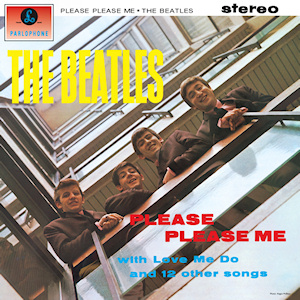
The Beatles’ first album, largely recorded on February 11, 1963 (four tracks were recorded for their first two singles in late 1962), and released in the UK on March 22, 1963.
Starting with their debut album Please Please Me in early 1963, the Beatles changed that. Every song, even their American rock’n’roll covers, was almost as good as, or sometimes even as good as, their hit singles. It’s often marveled at in rock literature that they recorded the album in one day, but it’s sometimes not noted that actually four of the songs were previously recorded in late 1962 for their first two singles. So they weren’t recording a standalone album in its entirety from scratch. But cutting ten tracks of such high quality in one day for the bulk of the LP was still a remarkable achievement.
I make these observations when I teach my non-credit community education classes on the Beatles, or indeed on general rock music history. I do add that there were some rock LPs prior to the Beatles that were very good and consistent, though not too many. I have in mind some of the records on the following list in this blogpost.
What makes an early rock LP a standalone album, and not a compilation? As noted, even Please Please Me contained some previously released material. The qualifications will vary and even be hotly contested according to the critic and fan. For the purposes of this post, I’m only considering albums in which at least half the material was previously unreleased. I know that’s kind of a loose standard, but standards were generally looser in the early days of the long-playing record.
Before writing this, however, I’d never devoted much thought to measuring just how many really good pre-Beatles rock albums there are. Kind of to my surprise, I had a hard time filling out a Top Ten list of my favorites in which I could really get behind each LP as something I’d enthusiastically play from beginning to end. I had to cheat a little bit — inserting a live album recorded before but released after Please Please Me, records in which the last sessions took place just after Please Please Me was finished, and a folk revival LP by an artist who later went into folk-rock – just to push the number up to ten.
Many artists who have compilations never put out an outstanding LP. Some came close, but they or their labels didn’t select or program available tracks well. Some early LPs regarded as classics turn out to have been dominated by singles. There are enough examples of interesting non-qualifiers to fill up an entirely separate post, but I’ll note some at the end of this list.
On the whole, the paucity of really good pre-Beatles rock LPs testifies to the group’s innovations on this front, maintained with their second LP (With the Beatles, late 1963) and expanded upon in almost every subsequent album they released. There is a clear winner as far as the act that made the best LPs before the Beatles’ emergence, which might surprise listeners only familiar with their numerous hit singles.
1. The Everly Brothers, It’s Everly Time (1960, Warner Brothers). The Everlys’ first album for Warners, following a long run of stardom at Cadence Records in the late ‘50s, did have a hit single (“So Sad”). Otherwise, however, all of the tracks were new to disc. They were all decent-to-excellent, and varied, including five compositions by the duo that wrote quite a few of their early hits, Felice and Boudleaux Bryant; quality covers of recent rock and R&B songs by Ray Charles (“What Kind of Girl Are You”) and Fats Domino (“I Want to Know”); and a good non-wimpy version of the pop tune “Memories Are Made of This.” Some of the Bryants’ contributions were really strong, those being the bouncy “Some Sweet Day” (covered to fine effect by Fairport Convention on the BBC in the late ‘60s), the fairly gritty (certainly for the Everlys) “Nashville Blues,” and “You Thrill Me.”
About the only complaint you could make, which is one that would apply to many early rock LPs, is that the running time’s too short, the dozen tracks adding up to 27 minutes. The guy who turned me on to this more than thirty years ago felt that the songs on this and their next album (see next listing) tended to fade out too early. But those are minor drawbacks for a rare early rock LP of mostly new material where every song is good. And though not many people talk about it today, it was a big hit in its time, making #9 in the US and #2 in the UK.
2. The Everly Brothers, A Date with the Everly Brothers (Warner Brothers, 1960). Issued just five months after It’s Everly Time—product line expectations really were higher back then—A Date with the Everly Brothers was another LP by the duo that was well above the standards of the albums by their peers. If not quite as killer as its predecessor, it was similar enough to It’s Everly Time that it almost sounded as if it could have been recorded at the same sessions. Indeed, two of the songs were—the huge classic hit “Cathy’s Clown” and its B-side, “Always It’s You.” Those songs, and “Lucille” (the B-side of “So Sad”), are the only three of the twelve tracks that had been previously released.
“Lucille,” an excellent guitar-centered cover of the Little Richard hit, became a sizable hit in its own right, reaching #21. Other highlights included the first version of the famous Boudleaux Bryant composition “Love Hurts,” predating Roy Orbison’s more famous rendition, and the catchy Felice & Boudleaux Bryant collaboration “So How Come (No One Loves Me).” As it happened, those three songs made for a great start to the second side of the LP, even if that momentum couldn’t be kept up over the course of the whole program.
As the Beatles did fine versions of “So How Come (No One Loves Me)” and “Lucille” (in an arrangement much closer to the Everlys’ cover than the Little Richard original) on the BBC in 1963, here’s guessing they must have had a copy of this LP. They weren’t alone in their home country. It made #3 in the UK, and #9 in the US—numbers they’d never again approach.
Like It’s Everly Time, however, this is a short album, clocking in at 28 minutes. Fortunately, in 2001 WEA International combined both LPs onto one CD, adding seven bonus tracks also recorded in 1960 (including the hits “Walk Right Back,” “Ebony Eyes,” and “Temptation”). That makes for a great value package of the duo at their Warner Brothers peak.
That peak didn’t last too long, in part because the Everlys were distracted by stints in the Marine Corps and attempts to break into Hollywood as actors. More seriously, a publishing dispute broke off their access to compositions with the Bryants (though the dispute wasn’t with the Bryants themselves). They did record more fine material for Warner Brothers in the 1960s than most people realize, but never again made LPs as good as their first pair. In fact, they never really made an album that seemed designed as a strong standalone piece until 1968’s country-rock Roots, when solid LPs by rock acts were much more common and expected than they were in 1960.
When history looks at unfilled potential of rock greats, the strongest focus is unsurprisingly on artists who died young, like the Everlys’ friend Buddy Holly. One wonders, however, whether the Everlys might have made much better LPs after 1960 had the military, Hollywood, and the publishing problem not gotten in the way. And, indeed, whether rock history might have been altered in some way, if they could have demonstrated it was possible to sustain a run of quality rock albums before the Beatles came along.
3. The Beach Boys, Surfin’ U.S.A. (1963, Capitol). It’s true the Beach Boys’ second album doesn’t find them as much at the top of their game as other artists were on LPs on this list, like the Everly Brothers and Elvis Presley. It’s also true that some might disqualify this record from consideration as it was actually released three days later (March 25, 1963) than Please Please Me, which came out on March 22. And although some of the sessions took place before the Beatles finished Please Please Me on February 11, seven of the twelve tracks were cut on February 11 and February 12.
Also in the “it’s true” category: the Beach Boys never did manage a really great start-to-finish album before 1966’s Pet Sounds, and never did after Pet Sounds for that matter. They had a good number of strong LP tracks—much more so than most ‘60s acts with plenty of hit singles—but through the mid-1960s, they were spreading their assets too thin over too many albums issued in rapid succession. Even on Surfin’ U.S.A., the two songs that had been on a single (“Surfin’ U.S.A.” and its hit B-side “Shut Down”) were easily the best on the record.
Having listed the reasons why Surfin’ U.S.A. maybe shouldn’t be on this list, let’s turn to why it is on the list, and at #3 at that. At a time when the usual quality of rock LPs was pretty low, Surfin’ U.S.A. was pretty good. Aside perhaps from a couple of the weakest instrumentals, none of the tracks were dispensable. Some were pretty good—“The Lonely Sea” (actually dating from a June 1962 session) is a superb ballad, “Farmer’s Daughter” a pretty decent midtempo harmony rocker, and “Noble Surfer” a fair vocal surf song. “Stoked” is actually quite a hip surf instrumental, and while the covers of Dick Dale’s “Let’s Go Trippin’” and “Misirlou” aren’t as good as the originals, they’re respectable.
Unlike many of the records (including many big hits) they’d issue over the next four years, Surfin’ U.S.A. was played by the Beach Boys, without any session men. If their skills were a little on the rudimentary side, they were nonetheless a capable, even exciting band on their own. If its impact wasn’t as big as the Beatles’ first albums, it was pretty big, making #2 in the US, and demonstrating that a self-contained rock band could make a varied, highly enjoyable full-length album of mostly original material.
4. Elvis Presley, Elvis Presley (1956, RCA). Give RCA some credit–although the label might have been nervous about whether its then-astronomical investment in Elvis might pay off in early 1956, it quickly committed to a full-length album. The self-titled LP was issued on March 23, a day before “Heartbreak Hotel” became Presley’s first single to enter the Top Twenty, on its way to a seven-week reign at #1. What’s more, the record didn’t have “Heartbreak Hotel” or any singles.
Nine of the twelve songs were issued on EPs in March, I’m guessing simultaneously with the LP. Some purists might maintain their availability on records that might have predated (if just slightly) or come out the same time as the LP would disqualify it from this listing. In part because the LP (which made #1) was by far the format on which fans were most likely to first hear the songs, and in part because whatever difference existed was probably very little, I’m not letting this prevent it from getting on this list.
On to the music: it was very good, if not quite on the level of his early singles for both Sun and RCA. It was also a bit of a jumble: seven tracks were cut in January 1956, but the others were Sun outtakes from 1954 and 1955, three of them rather restrained ballads. The covers of recent early rock’n’roll hits (including “Tutti Frutti,” “I Got a Woman,” and most famously “Blue Suede Shoes”) were appreciably different from, but not quite as good as, the originals.
I do like his version of the Drifters’ hit “Money Honey” better than the original, and a couple of the other January 1956 tracks (“I’m Gonna Sit Right Down and Cry (Over You),” covered well by the Beatles in 1963 on the BBC, and “One Sided Love Affair”) are very good. So are the earthier Sun outtakes, “Just Because” and “Tryin’ to Get to You.”
So it adds up to a good, often electrifying debut that quickly demonstrated Elvis’s talents went well beyond what he put on his singles. I’m aware many critics would put it higher on the list—some even at #1—but the recordings just aren’t quite as good as his best early 45s.
It’s also missing his great January 1956 version of Arthur Crudup’s “My Baby Left Me,” saved for use as the B-side to his second RCA single, “I Want You, I Need You, I Love You.” In my opinion, it’s his greatest post-Sun recording besides possibly “Hound Dog” and “Jailhouse Rock,” and his only RCA recording that sounds like it could have been done at Sun Records. Its presence on the Elvis Presley album would have boosted it considerably. So would the inclusion of another Crudup cover he cut on January 30, 1956, “So Glad You’re Mine,” which was saved for his second RCA LP, Elvis (which otherwise was solely comprised of tracks from early September 1956 sessions).
As a footnote, if a record gets a bonus point for a memorable cover, Elvis Presley certainly deserves one. By now, it’s well known that it was emulated almost a quarter century later on the Clash’s London Calling.
5. Dionne Warwick, Presenting Dionne Warwick (1963, Scepter). This might come as a surprise, as Warwick’s not especially thought of as an album artist; as she had such a long run of hit singles written and produced by Burt Bacharach and Hal David; and some might feel that her brand of soul/pop was too mild to be categorized as rock, though I’d disagree with that. It turns out, however, that this debut LP was issued on February 10, 1963—the day before the Beatles finished Please Please Me. What’s more, just four of the twelve tracks had been issued as singles. It’s even possible the second of those singles, “This Empty Place”/“Wishin’ and Hopin’,” was issued a bit later than this LP; I can only pin down its release date to the month February 1963, though I’m guessing it probably came out around the same time as the album.
In common with the majority of other LPs on this list, the singles here—her debut “Don’t Make Me Over,” and both sides of the aforementioned Febuary 1963 45—are decisively the best tracks. But it’s a strong album on the whole, with some of the other Bacharach-David-penned tracks almost matching the quality of those singles. She acquits herself well on “Make It Easy for Yourself,” which had already been a hit for Jerry Butler, and would also be a hit a couple years later for the Walker Brothers. The same’s true of “It’s Love That Really Counts,” a poppier version of which would be a very small (#102) hit for the Shirelles, and also a #24 UK hit later in 1963 for the Merseybeats.
Yet another track, “The Love of a Boy,” was also a hit for someone else (Timi Yuro, who took it to #44), though Warwick’s reading was far more gracefully understated. And “Wishin’ and Hopin’” would be a Top Twenty UK hit for the Merseybeats in 1964, the same year Dusty Springfield took it into the US Top Ten. Bacharach-David’s “I Cry Alone” sounds like it should have been a hit for Warwick, but it wasn’t a hit for anyone, and not issued on one of Dionne’s singles.
The rest of the material on the LP wasn’t quite up to the level of these songs, and some weren’t even written by Bacharach-David. But overall it was a fine debut, and generally an unveiling of Warwick’s distinctive orchestrated pop-soul, as produced and written by Bacharach and David. It’s also somewhat more R&B-oriented, and less lushly arranged, than her subsequent work, which is a plus in my book.
6. The Everly Brothers, The Everly Brothers (1958, Cadence). This ekes onto the list, as six of the dozen tracks had been issued on the Everlys’ first three Cadence singles. These included their huge hits “Bye Bye Love” and “Wake Up Little Susie”; their quality Don Everly-penned, less uptempo B-sides “I Wonder If I Care As Much” and “Maybe Tomorrow”; and the less well known mild hit single from early 1958, which paired a cover of Ray Charles’s “This Little Girl of Mine” with the Everlys original “Should We Tell Him.”
Inevitably, these overshadowed the other tracks on the LP. But even though it was largely filled out by covers, these versions weren’t mailed in. The Everlys aren’t noted for being fine R&B interpreters, but actually they were pretty good at the style. On this debut, they offer respectable, and respectably hard-rocking, versions of Charles’s “Leave My Woman Alone,” Gene Vincent’s “Be-Bop-a-Lula,” and Little Richard’s “Keep a Knockin’” and “Rip It Up,” though none of these match the originals (“Leave My Woman Alone” coming the closest). In all it made for a solid listen, and sold pretty well at a time when LPs had a much smaller slice of the teenage/rock market, making #16.
Some other critics might put their next album, Songs Our Daddy Taught Us, on this list as well, but I find this record of low-key traditional-oriented folk and country covers less exciting on the turntable than it is as a concept. It did demonstrate that the Everlys were putting more effort into making their albums distinct entities than most of their early rock peers. They also picked a concept with more integrity than other detours that early rockers attempted on LPs, like entire albums of Christmas music (though the Everlys would eventually do one of those too) or pop/jazz standards.
7. James Brown, Live at the Apollo (1963, King). Although released in May 1963, a couple months after Please Please Me came out, this was actually recorded on October 24, 1962, before all but two of the tracks on the Beatles’ debut were cut. Unusually for a soul LP of the era, it was a big hit on the pop charts, where it peaked at #2. It also did a great deal to launch Brown into a higher level of stardom, though he was already a big figure in the R&B world.
I’m aware that many critics would place this higher on a list like this. Some might even put it at #1. But musically, I don’t find it as impressive as its reputation. It’s more oriented toward ballads than you might expect, and drags a bit for me. If everything here was as kinetic as the frantic version of “Think,” I might indeed put it at #1, or at least a lot closer to the top position. But it doesn’t reach those heights otherwise, or indeed the heights of his best subsequent ‘60s singles (or Live at the Apollo Vol. 2, recorded in June 1967), whether uptempo or not.
If any record on this list gets points for historical significance, however, this certainly does. It was the first live rock or soul album to have a huge impact; one that did a good deal to expand the audience for earthy soul; and one that demonstrated that earthy soul LPs could sell in massive numbers. Not that it matters much, but it turns out that though the record has been praised for capturing the onstage and audience energy of a live soul concert, much of the crowd noise was overdubbed from recordings of white teens in the audience at a Cincinnati sock hop. Many live recordings throughout the history of the record business have employed such overdubs, but that does mean it’s not as authentic a document of early soul as had been assumed for many years.
8. Buddy Holly, Buddy Holly (1958, Coral). Like the Everly Brothers, Buddy Holly took somewhat more care with his LPs than most early rock stars did. Unlike the Everlys, he didn’t get to the point where he delivered a couple albums dominated by LP-only material. Fully half of his first solo album—really his second, since the debut by his band the Crickets had come out a few months earlier (see next listing)—had come out on singles. And yes, these were pretty much the record’s best songs, including the A-sides “Peggy Sue,” “Words of Love,” and “I’m Gonna Love You Too,” along with the excellent B-sides “Listen to Me” and “Everyday.”
Still, the rest of the cuts weren’t that run-of-the-mill, and one was great. The great one was “Rave On!,” which became a hit when it was issued as a single after the LP came out. His cover of Little Richard’s “Ready Teddy” is actually pretty tough, as is his version of “You’re So Square “(Baby I Don’t Care),” first recorded by Elvis Presley.
Holly was a forward-thinking guy for a late-‘50s rock star, writing most of his own material and taking an increasingly firmer hand on its production. One has to guess he would have been likely to attempt more sturdily conceived standalone LPs had he not died in February 1959, but we’ll never know for certain.
9. The Crickets, The “Chirping” Crickets (1957, Brunswick). In a situation destined to confuse future generations, some of Buddy Holly’s records were credited to his group the Crickets, and others credited to Holly alone, though they essentially sounded like the work of the same artist. Although billed to the Crickets, this can be considered Holly’s debut LP. Four of the twelve songs had been on singles, including “That’ll Be the Day,” “Oh, Boy!,” and the B-sides “Not Fade Away” and “I’m Looking for Someone to Love.” And yes, they were a cut above most of the rest of the material.
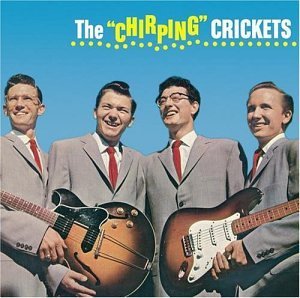
Nonetheless, even on the less top-flight tunes, Holly was pretty good, and sometimes more than that. “Maybe Baby” was so great, in fact, that it became one of his biggest and best hit singles in 1958. While Holly’s covers weren’t nearly as distinctive as his original compositions, his versions of songs by the likes of Chuck Willis and Roy Orbison are okay. They don’t stand out in the company of hits, however, whether here or on subsequent Holly compilations. Interesting footnote: this was the first album Eric Clapton ever bought.
10. Bob Dylan, The Freewheelin’ Bob Dylan (1963, Columbia). No, this isn’t a rock album. It’s a folk album, even if one track (the traditional song “Corrina, Corrina”) has feather-light band backing, including drums. It was released two months after Please Please Me on May 27, 1963. And though over two-thirds of it was recorded in mid-to-late 1962, four of the thirteen tracks were cut on April 24 of the following year, by which time the Beatles’ debut had been in UK shops for about a month.
But aside from the all-important need to push this list to exactly ten selections, this is the first album by a major figure who’d move from folk to rock that was dominated by original material. (There were only two original compositions on his prior album, his self-titled debut LP.) Even before Dylan moved into electric folk-rock in early 1965, it was influential on rock musicians, most famously the Beatles. And it demonstrated to the rock generation in general that an album could be a major standalone statement without hit singles, or even by an artist who at the time wasn’t making a dent in the 45 market.
It was little known at the time, but is widely known now, that some rare copies of the first pressing of Freewheelin’ Bob Dylan had different tracks. Four songs from that version—dating from 1962 sessions, and generally more traditional folk-oriented than the most famous songs on the album—are missing from the common edition, which replaced them with four others. Two of those others (“Girl from the North Country” and”Masters of War”) were among the most celebrated songs on the LP, validating whatever decision might have been made to alter the contents.
So those are my personal favorites, and my reasoning, which I’m sure would be debated if submitted to a panel constructing an official list of this sort of thing. And, possibly more controversially, here’s my reasoning for not including some other early rock LPs that have their champions:
Elvis Presley. His second album, simply titled Elvis (from October 1956), has its moments, and like his first does not use big hit singles to fill out the running order. I just don’t find it all that exciting, with the exception of his cover of Arthur Crudup’s “So Glad You’re Mine” (the sole track, as previously noted, to date from January 1956, all of the others being cut during the first three days of September 1956). His versions of Little Richard’s “Rip It Up,” “Ready Teddy,” and “Long Tall Sally” are okay, as are the Leiber-Stoller ballad “Love Me” and the calypso-tinged “How Do You Think I Feel.” Much of the rest, however, I find forgettable.
Ray Charles. If you were making a list purely on the basis of historic significance, certainly his 1962 album Modern Sounds in Country and Western Music (and to a lesser degree its sequel from the same year, Modern Sounds in Country and Western Music Vol. 2) would rank high. It made #1, and achieved unprecedented crossover appeal by having a soul singer perform country-oriented material. I’m just not such a big fan of it, and particularly of the sometimes sappy arrangements. Some of his other pre-1963 albums have their advocates, but they don’t really grab me, and a la many LPs of their era, are usually highlighted by hits that overshadow the non-hit tracks.
Gene Vincent and Wanda Jackson. Both were on Capitol Records, and both did a lot of fine tracks besides their big hits. For whatever reason, however, the cuts that were grouped into their LPs were uneven, even though with more selectivity, each could have constructed a fabulous album from the best recordings of their peak era.
Howiln’ Wolf. His self-titled album from 1962, sometimes called “The Rocking Chair Album” after the cover photo, is really good—there’s no dispute about that. It’s electric blues, but it’s close to rock in execution, and undeniably a big influence on the later blues-rock of the ‘60s, especially from British bands. But although it’s not a best-of—and Wolf didn’t really have enough chart success to generate a conventional best-of album—at least ten of these twelve tracks had already been on singles, and the other two (“You’ll Be Mine” and “Going Down Slow”) were on a 45 that might have predated the LP or been released around the same time.
Billy Fury, The Sound of Fury (1960, Decca, UK). What about pre-Beatles rock albums in the UK? Well, there weren’t too many of them, especially if you don’t count the ones by Cliff Richard & the Shadows. This one (actually issued in the ten-inch LP format, rather than the standard 12-inch one) by an early British rock star who’s known to few in the US (where he had no success) has its boosters. It’s unusual for consisting entirely of original material by Fury, sometimes credited to the pseudonym Wilberforce. Also unusually, just two of the ten songs were issued on a single, which seems to have come out about the same time. Here’s the thing: I don’t think it’s that great. It’s rather mild rockabilly, much inferior to the original US variety generated by Sun Records and other labels.
Roy Orbison, Link Wray, Dick Dale, Gene Pitney, the Shirelles, to name a few. They’re among my favorite pre-Beatles artists, and all have great compilations, whether they’re best-ofs or with a different focus. But none of them made really good standalone LPs. I could name several other such acts.
The Collins Kids. The album Introducing Larry and Lorrie looks like a late-‘50s LP, even if the artwork’s a little too cleanly tasteful. The twelve tracks would certainly qualify the cult brother-sister duo for this list, as they’re fine and at times white-hot rockabilly from the late 1950s. But it’s not an actual 1950s album. It’s a compilation, and was issued in 1983.
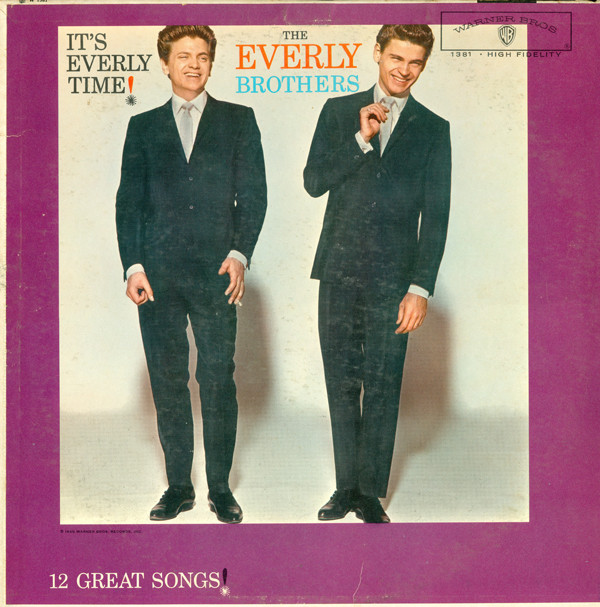
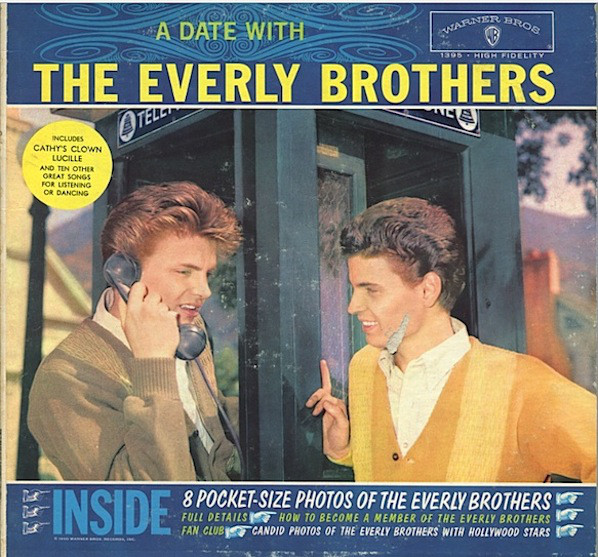
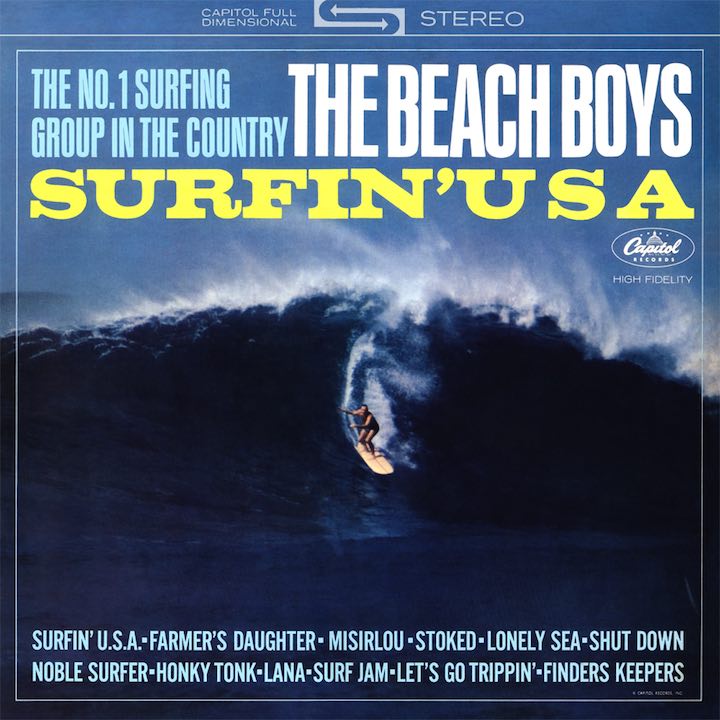
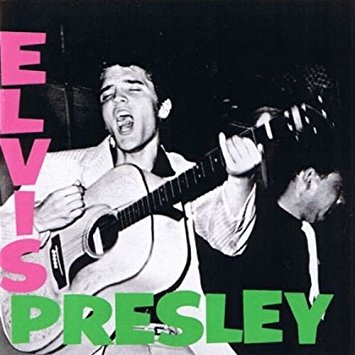
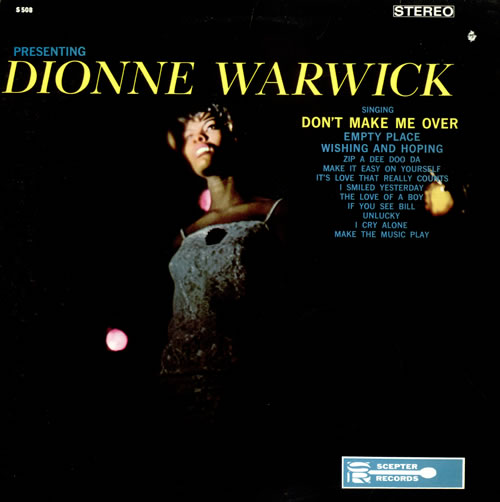
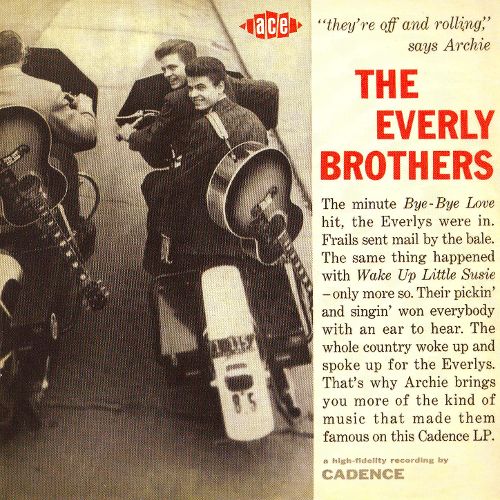
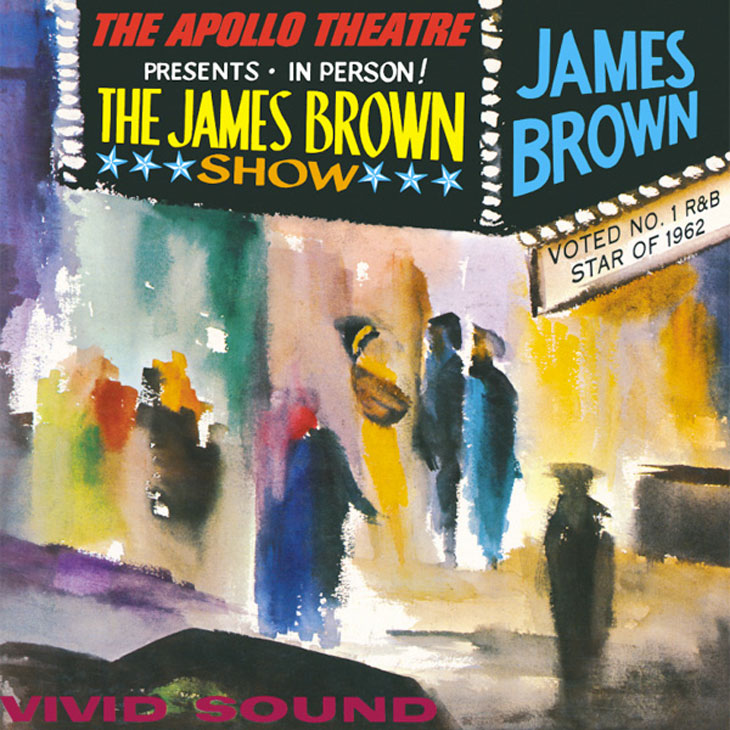


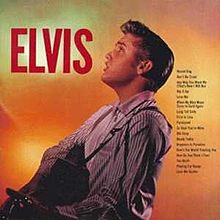
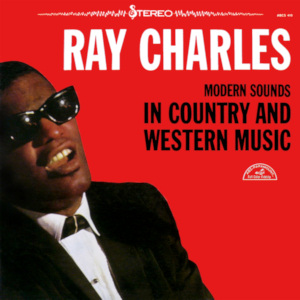
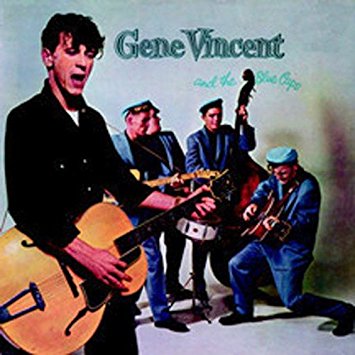
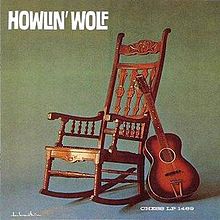
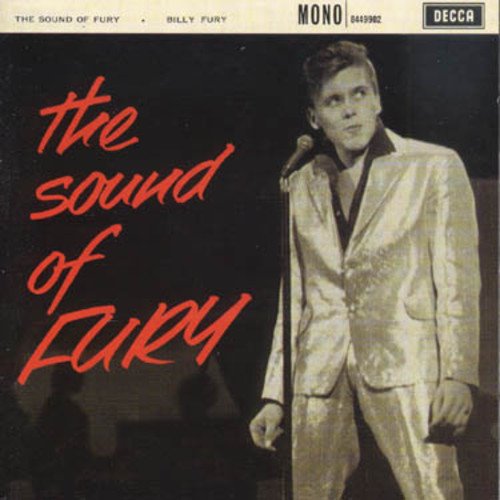

Fun project, Richie. I’d reshuffle your oder a bit perhaps but great list. I saw the Everly’s at a Bumbershoot once, w/ Orbison, as I recall; both were revelatory rock & roll. That Ray Charles album has ended up on several album short lists I’ve made over the years. Great record. Thanks.
Great topic and great article. One question: Didn’t any of Little Richard’s albums qualify?
A couple of his Specialty albums in the late 1950s did, though by my count exactly half (the best half) of the first of these, Here’s Little Richard, had already been on singles. They just weren’t among my favorites, and Here’s Little Richard would have had a stronger case if it wasn’t so dominated/overshadowed by the songs that had been hits.
Great topic, and great list. I wonder if you considered Sam Cooke’s Night Beat LP- I believe it was released later in ’63 but recorded in February?
Also, just a minor quibble. The Everlys served in the Marine Corps reserves rather than the Army.
I didn’t consider Night Beat. It was recorded February 22, 23, and 25 in 1963, so ten days to two weeks after Please Please Me. I’m not sure I would have included it if had qualified (and it didn’t miss by much). I’ve made the correction about where the Everlys served.
I’m writing down your list and trying these albums out